Larry Eifert
First published in the Seattle Times
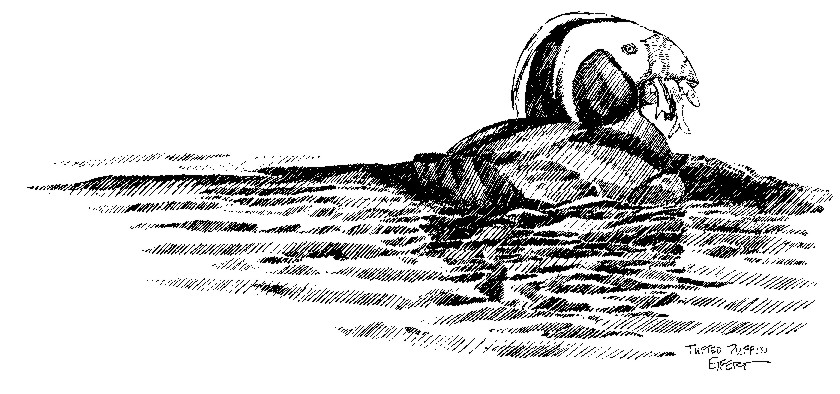
The Smith Island Race, sponsored by the Wooden Boat Foundation, begins off the Port Townsend waterfront and features an out-and-back 35-mile run around Smith Island, that lonely patch of sand and kelp just south of Lopez Island in the San Juans. This is a race for wooden boats, and because of the distance and location, usually larger wooden boats. Included in the lineup were the usual local boats,Annie Too, Sir Issac, and Martha, boats in the 40- to 70-foot range, boats that could make it around the course in almost any wind and water conditions, and finish before nightfall.
We, however, entered the race with our 1939 29-foot Monk Sr sloop, Sea Witch, the boat Jo Bailey once owned and used to write her “Gunkholing” book series and countless Northwest boating articles. It’s a boat well-known to locals, and, of all the boats entered, Sea Witch was by far the smallest.
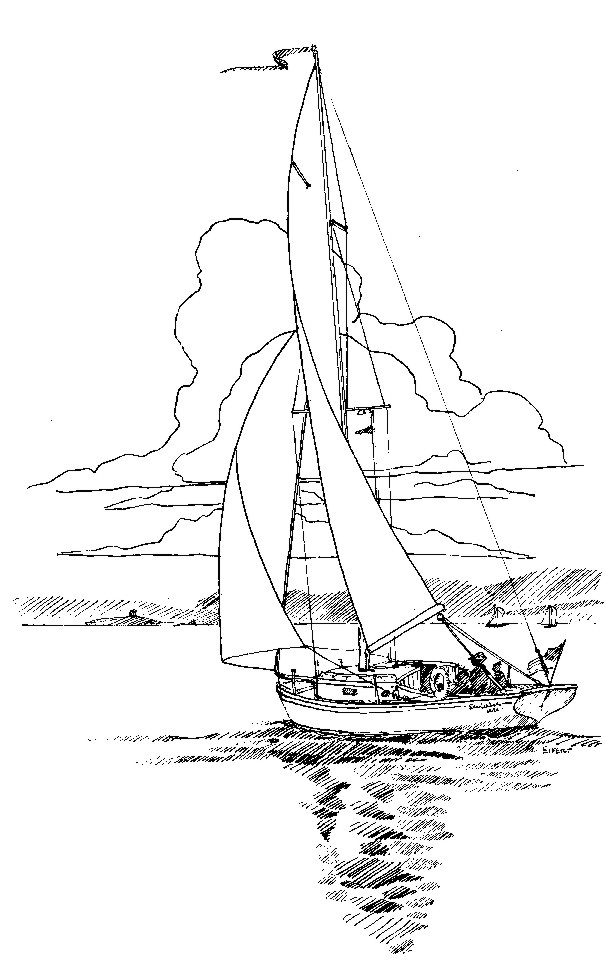
After a pretty fresh start, the fleet made its way towards Point Wilson in dying air, crossing over to Partridge Point where the wind clocked around to provide a slow but sure spinnaker reach. Being a bird painter and naturalist always helps pass time during slow sailing because there is usually some bit of nature to look at and talk about, and after the boat was moving well I had chance to see some of the ‘locals.’ In the channel off Point Wilson we saw a few pigeon guillemots, those small black chunky birds with large white wing patches. They look like most of the other LBFJ’s (little black floating jobs), around here but for the exception of flashy red feet that comically hang out behind them in flight. Young and adults in winter change plumage to a speckled white pattern but those feet are always red. I had probably seen these same identical birds many times before because it appears this population nests in bank-side burrows high above Point Wilson in the cliffs of Fort Worden State Park. While walking those beaches in spring I can hear them twittering high above on the sandy cliffs. On occasion I’ve also seen them do a weird little “water dance” in groups with much flapping and paddling. Romance at sea?
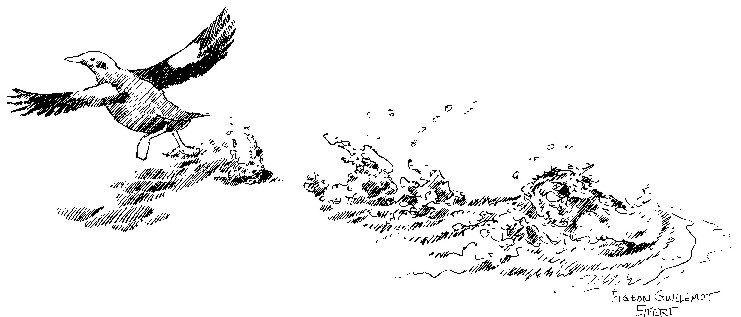
Oops! Typically not paying attention to the boat but instead to the birds, the wind and fleet has now shifted course, leaving us flailing about and already dropping behind.
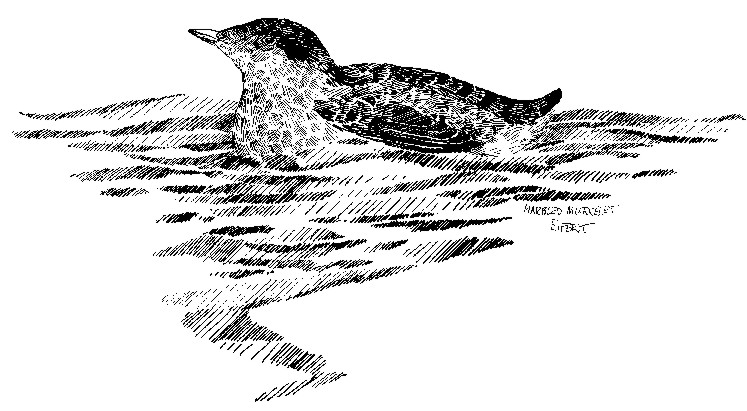
But then there was another bird close by, a marbled murrelet, similar in size to the guillemots but chunkier. In summer these rare birds are speckled dark brown; in winter, black and white. The reason they sport these summer colors is obvious as soon as you know where their nests are, and, unbelievable in an area of massive logging for over a century, no one knew this until 1974, making the murrelet the last nest of any North American bird to be discovered. These ocean birds build mossy nests on limbs in huge old-growth trees, often far away from water. The bird I saw here was probably from Olympic National Park, a large enclave of old-growth forests. Heavily insulated for cold ocean water, murrelets cannot tolerate forests without a cool mossy configuration, and so populations have plummeted as the old-growth has vanished. They spend their days diving for small fish, then fly after dusk to their nests miles inland to feed young (usually only one chick) and return to saltwater just before dawn. It’s a rare sight to see one, almost as interesting as, say, seeing a puffin.
Now the big boats were showing their stuff, with longer waterlines and taller masts providing better boat speed, and our crew on little Sea Witch watched the fleet pull away. Smith Island seemed vastly far away; just a speck in the distance – or was that a floating log? The next half hour was spent checking the tide tables and Washburn’s book, trying to figure out which side of the island to pass on as the rules stated we could round Smith Island in either direction. As we passed Partridge Bank buoy it appeared most of the boats were heading for a clockwise rounding, and always the contrary crew we decided to go the other way. Besides when you’re already last, you won’t win by following the rest of the fleet. This called for tactical brilliance!

Just then, however, a raft of rhinoceros auklets surfaced almost in unison and conversation immediately turned back to the birds. These little black divers look similar to the others we’d seen, but with stout yellow bills that have an added appendage, an upright rhino-like horn that appears during breeding season. If the guillemots looked like a Fairlane, the auklets could have been an old VW bug sporting a giant hood ornament. As we passed, they floated by in long lines of birds, diving together in unison to “herd” small fish upwards and into easier catching distance. In this way they hunt together as a team, sometimes with upwards of 30 birds.
Rhinos nest on nearby Protection Island, a National Wildlife Refuge located near the mouth of Discovery Bay in the Strait of Juan de Fuca. Approximately 70 percent of the nesting seabird population of Puget Sound and the Strait of Juan de Fuca nest on this one island, which includes one of the largest nesting colonies of rhinoceros auklets in the world and the largest nesting colony of glaucous-winged gulls in Washington. (The island also contains one of the last 2 nesting colonies of tufted puffins in the Puget Sound area, but then they’re so rare we couldn’t imagine running across one of them out here.) Rhinoceros auklets carve nests from sloping banks, usually from five to twenty feet deep (that’s a lot of digging for a small bird). They spend their winters in Baja, showing that, at least in some ways, birds are smarter than humans.
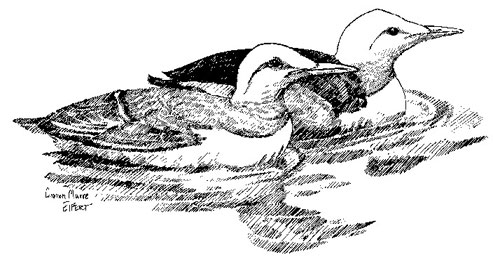
Common murres were also in this area, with some mixing in with the auklets to help with the fish herding. These birds are a bit bigger and much sleeker, almost with the design of a jet fighter. In late summer, young birds follow adults, begging insistently for food with a short whistle, followed by the adult moaning a pirate aarrr in response. When dozens of these pairs are nearby, the sound can be quite an experience. Look for them, as well as the others, near tidal convergences that bring nutrients and, therefore, small fish, to the surface.
Now we were coming up on Smith Island and we watched in disgust as the entire fleet was already around and heading back for Port Townsend. A big ebb had set in and the leaders caught this along the Whidbey Island shore, slingshotting them forward. We, on the other hand, were battling it head-on and it looked like a long pull to round the “mark.” To top it off, the wind was now continuing to clock around to the West, providing the rest of the fleet with yet another spinnaker run, but it looked like we were going to have to tack to even reach the island at all. The frantic discussions about just how best to get an old boat going were comical at best. We all descended into a funk that produced a silence almost painful to hear. As we finally got around the island, we were so far behind the leaders it was impossible, even with 10x binoculars, to make out which boat was which.
But just when you think sailing is a total drag, there’s always something new to see. Low and behold, dead ahead just on our starboard beam was the catch of the day, a tufted puffin, that rare bird we never expected to see. Here in plain view for all was the bird that looks like a clown in a feather costume. When you first see one of these guys you initially wonder who the joker was that designed it. The short round black body with orange feet is alright, but then there’s that head. White cheeks with a broad and brilliantly red and orange bill like a trowel balance a sweeping yellowish swept-back tuft of feathers curving around behind each side of the head. Topping this, a yellow eye is surrounded by a red eye ring. A comparison with the band Kiss is obvious but in a glamour contest I’ll take the puffin getup hand’s down. We slowly passed the bird as he showed off his afternoon catch of small herring hanging out of his bill, three, four, no, maybe six little fish all lined up carefully in that bill that could have easily cut my finger off with a single tweak. Sometimes the best sailing experiences don’t involve sailing at all, and this proved the case. As we continued towards the finish line, we joyfully talked about the puffin the rest of the way home.
Oh, and when the race results were posted, we found that Sea Witch had placed third on corrected time. To me, we placed first on a great experience, the memory of which has lasted all the way to this story.
***previous*** — ***next***
|